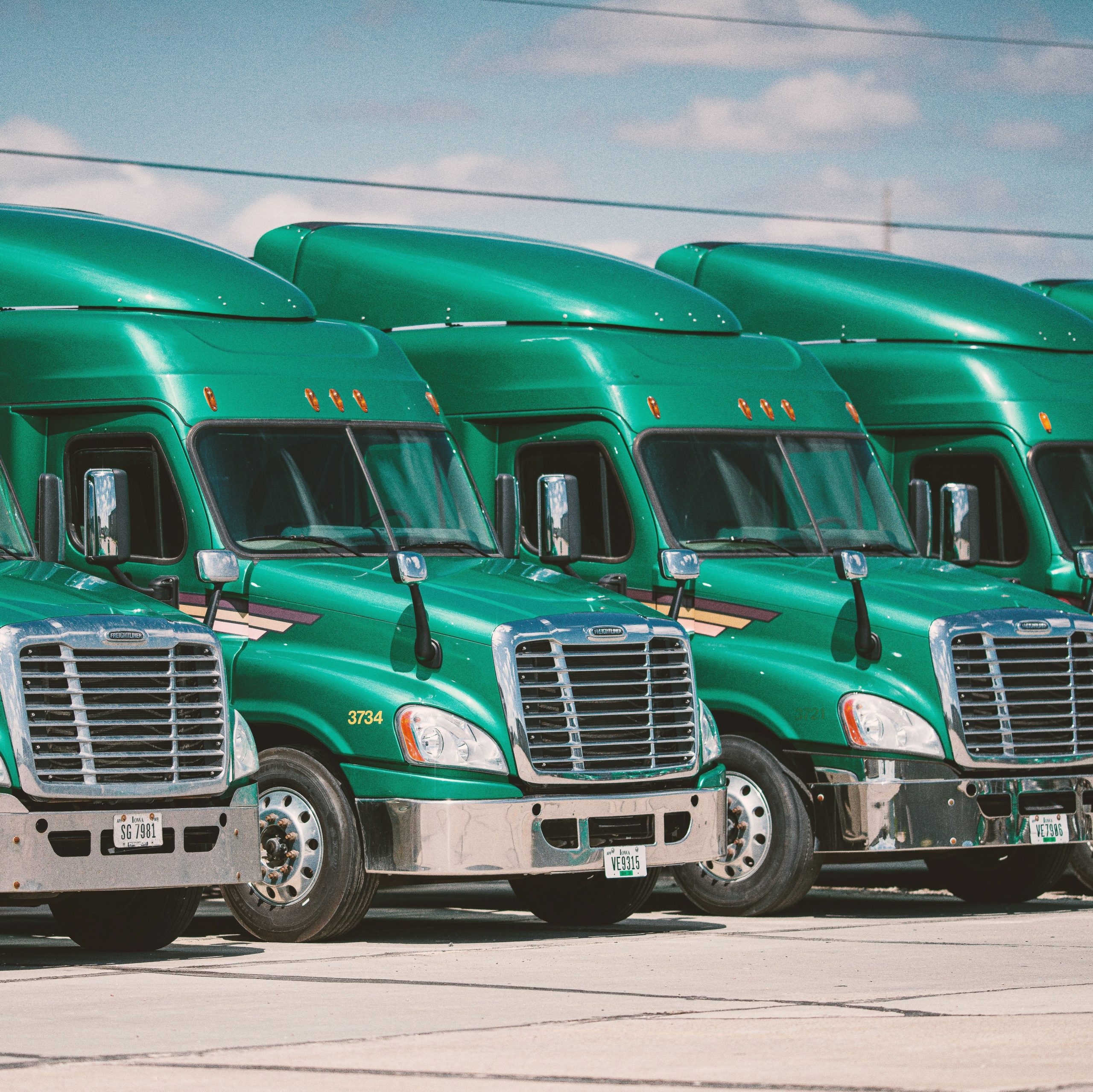The fundamental process of logistics operations has remained relatively stable for some time. Though there have been advancements aimed at enhancing supply chain efficiency, those in the logistics sector have grown accustomed to existing technologies integrated into their daily workflows. Consequently, there has been minimal exploration into newer technology solutions that could potentially elevate operational performance. Despite the perceived comfort with the status quo, there exists a realm of untapped potential. Enter trailer tracking, a recent innovation poised to revolutionize the logistics industry. While companies may be content with their current operations, they may not fully grasp the transformative power of integrating a trailer tracking solution. What could your operations achieve with such a solution in place? We hold the key to unlocking that potential.
Increase Your ROI by Investing in AirFinder Everywhere
- Loss Prevention. Reduce the amount of loss that occurs during the supply chain process
- Location Coverage. AirFinder Everywhere uses a combination of GPS, Cellular, and WiFi to determine location everywhere
- Security Alerts. Know when a delay in shipment has occurred so the problem
can be addressed immediately.
The Importance of Trailer Tracking
The essence of trailer tracking lies in its capacity to offer real-time visibility of trailers both on and off the road, a capability facilitated by tracking devices. Fleet managers leverage these devices to precisely monitor trailer location and cargo status, empowering them to make informed decisions to enhance productivity.
Technology stands as a cornerstone in this ability to optimize fleet management. Through the collection of valuable data on driver conduct and fuel usage, companies refine their fleet management tactics, curbing expenses, and promoting sustainability. Additionally, trailer tracking bolsters security measures, thwarting theft by implementing geofences around facilities. This setup notifies companies of any unauthorized trailer entries or exits, thus fortifying asset protection and minimizing risks. Amidst the evolving logistics landscape, companies embracing and harnessing trailer tracking technology gain a competitive edge. By delivering on the pledge of seamless and dependable supply chain operations, they position themselves as industry leaders poised for sustained success.
Methods of Trailer Tracking
Pen-and-Paper and Manual Spreadsheets
Before delving into the more technology-oriented solutions for trailer tracking, it’s crucial to acknowledge the existence of the manual, non-technology-based methods that came before and are still used by some companies today. Understanding these methods provides a comprehensive view of trailer tracking and contextualizes the more sophisticated solutions we’ll explore further.
Indeed, manual tracking and spreadsheet databases serve as viable options for trailer tracking. For smaller companies, these solutions may even prove preferable due to their cost-effectiveness compared to formal trailer tracking systems, allowing workers to simply record what goes on and comes off of each individual trailer. However, these strategies are highly susceptible to human error, and their efficacy diminishes as companies expand by taking on either more cargo, more trailers, or more customers. As the volume of trailers, cargo, and other assets to track grows, so does the time required for manual tracking, exacerbating the challenge of rectifying record-keeping errors. After all, it’s one thing to manually record a few boxes on a few small trailers; it’s another thing entirely when those trailers are full-sized, stuffed full, and carrying the cargo for more than one company at a time. Moreover, even small-scale companies can optimize operational efficiency by investing in an affordable trailer tracking system, thereby saving valuable time otherwise spent on manual tracking and enabling themselves to account for anything lost in transit or placed on the wrong trailer. It’s no surprise, then, that this is only the first developed method of tracking, and that others gradually incorporate more automation into the process in order to increase efficiency and volume.
Barcode Scanning
Barcode scanning was the earliest and is the oldest method of technology-oriented trailer tracking. Barcodes represent data in a machine-readable format, often appearing as parallel lines with varying widths. They encode crucial details like SKU, name, and price, making them indispensable for inventory management across various sectors from manufacturing and warehousing to logistics and retail.
A robust barcode inventory system comprises barcode labels, scanners, and backend software. During scanning, visual data from the barcode is captured by handheld or mounted scanners, decoded, and presented in a readable format when the barcode is scanned. This information is then transmitted to the backend software for processing, storage, and analysis. Typically, barcode systems involve affixing labels to assets and manually scanning them using readers. Each barcode holds assigned data accessible via phone or computer, facilitating asset tracking within databases. Essentially, once the barcode is scanned, the associated entry of inventory or cargo is recorded to be in the location of the scan on the database.
While barcode scanning once represented a cost-effective asset tracking method, it is now largely outdated due to the development of more reliable, versatile, and automated asset visibility technologies. Although revolutionary upon release, advancements in technology offer superior visibility and benefits beyond barcode capabilities, providing visibility without the need for manual scanning and allowing misplaced inventory and cargo to be located regardless of human error. Many businesses that still rely on barcode scanners remain unaware of these innovative alternatives or mistakenly believe that they are not available at an affordable price point.
Telematics Systems
Telematics systems are not technically trailer trackers, but acknowledging the use and existence of telematics is important in establishing a timeline for the development of trailer tracking technology, as its existence influences the form that modern trailer tracking systems take. Telematics systems establish a communication channel between a truck and the company overseeing its routes and the overarching logistics process. While safety and compliance with regulations remain the primary drivers for its adoption in the industry, telematics offers additional advantages. By furnishing real-time location data about the truck, companies can gauge efficiency levels and implement data-driven enhancements.
Now, you might be wondering, “Doesn’t that cover everything that trailer tracking is used for? Why do additional technologies exist if this one is already required and provides visibility?” Well, let’s explore. The primary issue with using telematics as a trailer tracker lies in its dependency on an external power source. For the system to operate, it must remain connected to power. However, considering that a truck spends a significant portion of its lifespan powered off and a trailer spends a significant portion of its lifespan unhooked, this reliance poses a challenge. When a truck is inactive, only its last known location is available. Even more concerning is the lack of insight into the trailer’s whereabouts, which houses the revenue-generating goods. Various unforeseen events can occur, from break-ins to thefts. Disconnection from power results in zero visibility of the truck’s location, leading to wasted time searching or hefty expenses for replacements. What’s more, telematics systems are not designed to support more granular tracking of a trailer’s contents, leaving you largely blind to what cargo is within the trailer.
Telematics systems are not trailer tracking systems, but they are technology systems that logistics companies are required to use, already have, and are accustomed to using. It wouldn’t be practical to have a secondary system in most cases, which has influenced the evolution of trailer tracking technology. Instead of being designed to run exclusively as an independent IoT platform, many trailer tracking systems provide at least the option of integrating with telematics to provide all critical data in one central location that workers are already familiar with. Telematics systems are important to the development of trailer tracking systems not because they are trailer trackers themselves, but because they influence the form trailer trackers take.
GPS-Enabled RTLS Trailer Tracking
GPS trailer tracking represents a sophisticated technological system leveraging Global Positioning System (GPS) technology to monitor and manage the location, status, and movement of valuable assets in real time. This cutting-edge solution has reshaped numerous industries, especially logistics, by offering a comprehensive and precise method for tracking assets throughout their journey. Such a system plays a pivotal role in optimizing operations, monitoring the real-time location of trailers and cargo to ensure adherence to planned routes and schedules, all without manual input beyond establishing reporting times. Further, by establishing digital boundaries through geofencing, fleet managers receive immediate alerts in case of deviations or unexpected delays, enabling proactive intervention to prevent further disruptions and to provide invaluable insights and control over operations.
Unlike the methods that came before, which fall short in addressing frustrations related to misplaced cargo and operational efficiency, Real-Time Location Systems (RTLS) utilizing GPS tracking offer a robust solution for trailer tracking. This method provides a paperless method for tracking products as they move between specific locations, offering greater automation and efficiency compared to traditional methods. With this technology, manual product scanning becomes obsolete, streamlining operations and minimizing human error. This automation empowers workers and operators to effectively track cargo throughout the logistics process, locate misplaced cargo or equipment, and optimize processes to enhance operational efficiency. And all it typically takes is placing a GPS tracking device on your trailer, configuring your settings to report either on movement or every couple hours, and then letting the system run itself. It’s no wonder that this is the approach that most take. However, at Link Labs, we know that you can take trailer tracking one step further for even greater benefits.
SuperTag Hub: The Next Step in Trailer Tracking
The trailer tracking solution that we provide at Link Labs is called AirFinder Everywhere. On top of functioning as a GPS tracker that can fully integrate with a company’s existing telematics system, it also utilizes location technologies such as Cellular and WiFi sniffing in order to maintain full visibility while preserving battery life. This is because GPS is an incredibly power-hungry location technology; by giving you control over when you want more precise location and when approximations will suffice, we ensure that our devices will last far longer than most trailer trackers on the market, upwards of 7 years depending on your range, use case, and settings.
Since its debut, our SuperTag solution has undergone significant enhancements, reflecting our relentless pursuit of improvement. One such enhancement is the conception and incorporation of SuperTag’s Hub Mode, which combines our standard AirFinder Everywhere tracking with our location-based AirFinder Onsite system to provide granular visibility to the location, condition, and custody of cargo and other portable assets that travel between locations. When using the SuperTag as a Hub model for trailer tracking, trailers are affixed with a SuperTag and other critical cargo is affixed with BLE tags. While the assets are being transported, the BLE tags will report to the SuperTag that they are in the vicinity, confirming which trailer they are on and what driver they are with. If they are removed to another trailer, a warehouse, or their final destination, the SuperTag will report that they are no longer in the vicinity, confirming their last known location and that they have been successfully transported. This can work with multiple systems, too. If you have a SuperTag on both the first and second trailers the cargo traveled on, the first will report that it’s out of vicinity and the second will begin reporting that it has custody. It can also be picked up by AirFinder Onsite systems in warehouses and other storage locations. This creates accountability in the transportation process and automates record-keeping for improved efficiency, as the tags will automatically shift between segments of the system without manual input.
Begin Your Trailer Tracking Journey
The progression of trailer tracking technology has fundamentally reshaped logistics operations. Trailer trackers offer unprecedented visibility, real-time data insights, and proactive management tools, empowering fleet managers to optimize asset utilization, bolster security measures, streamline operations, and ensure compliance with regulatory standards. The capability to remotely monitor trailers, analyze performance metrics, and leverage data-driven decision-making has profoundly altered the logistics landscape. With ongoing advancements and innovations in trailer tracking technology, logistics operations are witnessing heightened efficiency, reduced risks, enhanced customer service, and a competitive edge in today’s dynamic business environment. As this technology continues to evolve, its influence on logistics operations will remain pivotal, driving further improvements and shaping the industry’s future. Trailer tracking has become an essential asset, propelling logistics operations towards greater efficiency, reliability, and success. To delve deeper into our trailer tracking solution, book a demo with our team today.

Publisher: Source link











